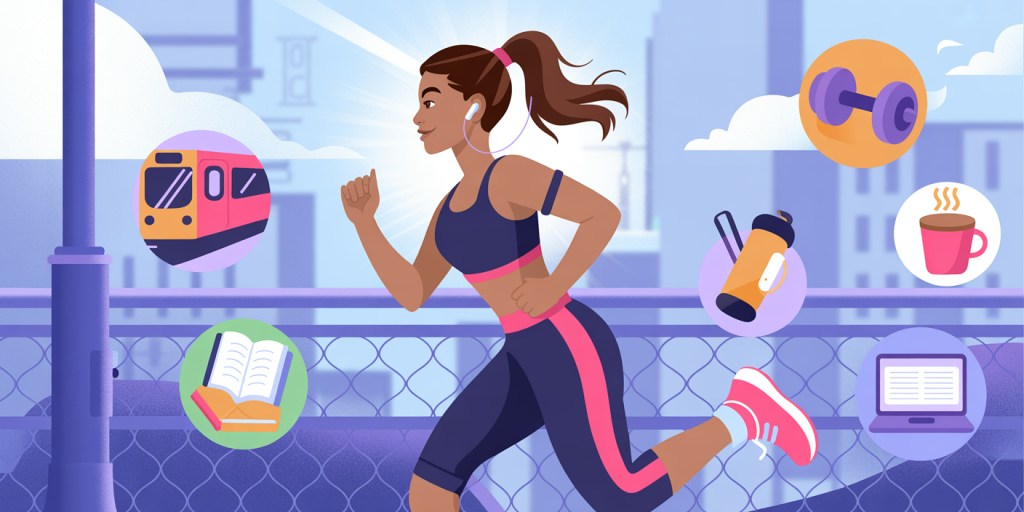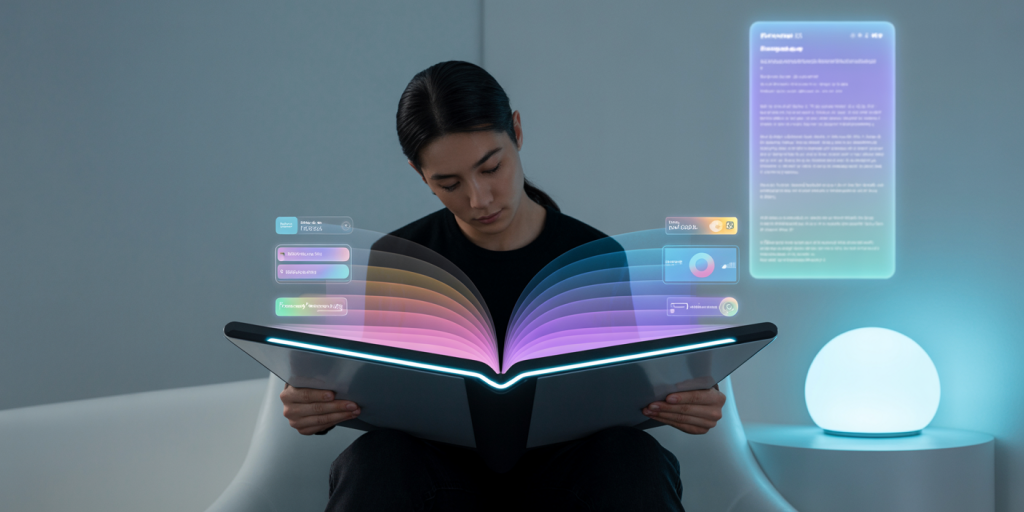Apps That Help You Read More Books Without Spending More Time
Anúncios
In an age dominated by fast-paced schedules and endless distractions, finding time to read books can feel like a luxury rather than a routine habit. Despite the proven benefits of reading — such as improved cognitive function, stress reduction, and increased knowledge retention — many people struggle to fit books into their busy lives. Fortunately, technology has stepped in with innovative apps designed to help readers consume more literature efficiently and effectively, without carving out additional hours in their day.
This article explores how certain applications leverage technology, cognitive psychology, and smart design to enable you to read more books without spending extra time. By incorporating techniques such as speed reading, audiobooks, and modular content consumption, these apps transform the reading experience, making it more accessible, flexible, and productive. We will also compare leading apps, analyze their features, and look at how innovations may shape the future of reading.
Anúncios
The Challenge of Time and Reading Habits
Reading more books often feels like a challenge primarily because of one factor: time. According to Pew Research Center (2021), the average American reads only about 12 books a year, attributing their low reading rates largely to “not enough time.” This perception of limited availability is exacerbated by competing digital distractions such as social media, entertainment, and work. As a result, many valuable reading moments slip away unnoticed.
Additionally, traditional reading habits require uninterrupted focus, which is difficult to maintain in today’s multitasking environment. Many readers abandon books halfway due to time constraints or lack of engagement. Moreover, most people read at an average speed of 200-300 words per minute, which naturally limits the volume of books they can consume. Apps that enhance reading speed or introduce alternative consumption formats can help overcome such obstacles.
By integrating reading into moments usually dedicated to other activities—like commuting or exercising—these apps maximize your existing time rather than demanding more of it. The result is a significant boost in the number of books you can read without disrupting your daily schedule.
Speed Reading Apps: More Books, Less Time
Speed reading apps are a popular solution for readers seeking to increase their reading efficiency. They use strategies like Rapid Serial Visual Presentation (RSVP), chunking, and eye-movement training to reduce the time spent per page without sacrificing comprehension.

One exemplary app is Spreeder, which allows users to paste text or import books and presents words or short phrases at a rapid but manageable pace. This interactive practice conditions users to absorb information faster. For instance, studies have shown that consistent speed reading training can improve reading speed by up to 50% over a few weeks (Moss & Ross, 2019).
Another notable option is Acceleread, which is specifically designed to train users to read faster through a series of customizable exercises. Users can track their progress, receive feedback, and gradually increase their reading speed while maintaining comprehension.
Practical Example: Sarah, a marketing manager with limited evening time, used Spreeder to tackle work-related articles and business books. By investing just 15 minutes daily, she increased her reading speed and consumed two additional books per month, which helped her stay ahead in her field without extra hours.
While speed reading apps are not suited for every type of material — deep literary analysis or dense technical writing may require slower reading — they are ideal for general knowledge, non-fiction, and informative texts.
Audiobook Apps: Transforming Idle Time into Reading Time
Audiobooks have revolutionized how people consume books by expanding reading into audio format. This modality allows users to listen to books during activities where traditional reading isn’t feasible, such as driving, jogging, or household chores. According to the Audio Publishers Association (2022), audiobook sales have increased by over 30% annually, indicating a growing user base appreciating this flexible reading form.

Apps like Audible, Libby, and Google Play Books provide extensive libraries of audiobooks, enabling listeners to download or stream content seamlessly. Audible also offers personalized recommendations and features like variable playback speed, allowing users to listen faster without missing nuance.
For busy professionals like James, a software engineer, audiobooks transformed his long commute into a productive reading session. He listens to programming books or biographies at 1.5x speed, covering about one book per week, which was unthinkable during his pre-audiobook days.
Comparative Table: Top Audiobook Apps
| Feature | Audible | Libby (by Overdrive) | Google Play Books |
|---|---|---|---|
| Library Size | 500,000+ titles | Large public library access | Extensive store-based |
| Subscription Model | Monthly fee + credits | Free with library card | Pay-per-book or subscription |
| Offline Playback | Yes | Yes | Yes |
| Speed Control | 0.5x to 3x | Limited | 0.5x to 2x |
| Cross-Device Sync | Yes | Yes | Yes |
| User Reviews | 4.7/5 (App Store) | 4.5/5 | 4.3/5 |
By integrating audiobooks into their routines, users effectively increase their book consumption without relying on traditional reading time, appealing especially to multitaskers or those frequently in transit.
Summary and Highlight Apps for Efficient Reading
In addition to speed reading and audiobooks, several other apps use summarization and modular content approaches to help users grasp key ideas from books quickly. Platforms like Blinkist provide concise 15-minute summaries of nonfiction books, distilling core concepts without requiring full-length reading. Users can choose audio or text summaries depending on preference. Market data from Blinkist (2023) reports over 20 million book summaries consumed monthly, reflecting demand for time-saving knowledge acquisition.
Similarly, Instaread offers summaries alongside actionable insights and analyses for busy learners. Such platforms are particularly useful for professionals and students needing to stay informed without dedicating hours to every book.
Practical usage shines in scenarios like Emma’s case — a law student who uses Blinkist to review case law books or legal theory summaries before exams. This streamlined approach allowed her to cover multiple subjects efficiently, complementing detailed study when time permits.
Integrating Reading Apps with Daily Habits
The success of reading apps hinges on users’ ability to integrate them into their daily routines seamlessly. Experts suggest coupling app usage with habitual daily tasks like commuting, lunch breaks, or exercise. This unconscious adoption minimizes the feeling of sacrifice and maximizes time utilization.
For example, pairing audiobook listening during a morning run or speed reading during coffee breaks inserts reading moments into otherwise idle periods. Research from the Nielsen Norman Group (2020) suggests that habit stacking—linking new habits to existing ones—increases adoption rates by up to 67%.
Moreover, many apps now offer integration with wearable devices and smart assistants, further streamlining access. For instance, voice commands to Audible via smart home devices allow hands-free control, making it easier to continue listening during household chores or relaxation.
User adherence is also bolstered by gamification elements seen in apps like Goodreads, which tracks reading progress and encourages competition among friends. Such social motivation often leads to increased reading engagement without requiring additional free time.
Emerging Trends and Future Perspectives in Reading Apps
Looking ahead, the reading app landscape is expected to evolve with advancements in artificial intelligence (AI), augmented reality (AR), and personalized learning algorithms. AI-powered apps could tailor reading speed, content selection, and summaries to an individual’s comprehension level and preferences, optimizing learning outcomes.
For example, future iterations of speed reading apps might use eye-tracking sensors to dynamically adjust text presentation based on a reader’s focus, boosting efficiency further. Similarly, AI-generated adaptive summaries could offer real-time highlights from complex texts, enhancing understanding in a fraction of the time.
Augmented reality can introduce interactive reading experiences by overlaying supplementary data, diagrams, or translations directly onto printed or digital pages, enabling deeper engagement without additional effort.

Moreover, the integration of neurotechnology might one day allow brain-computer interfaces (BCIs) to facilitate reading processes, translating thought into digital notes or summaries instantaneously.
These technological innovations hold promise not just for increasing reading volume but also for enriching the quality and retention of knowledge, signifying a future where reading more and better becomes possible without extra time investment.
The ability to read more books without spending more time is becoming increasingly attainable with the aid of specialized apps that optimize how and when we consume literature. Whether through speed reading techniques, audiobooks, curated summaries, or smart habit integration, these tools empower readers to make the most of their limited time. As technology advances, the potential for even more efficient, personalized, and immersive reading experiences is on the horizon, promising to revolutionize lifelong learning and personal growth.
